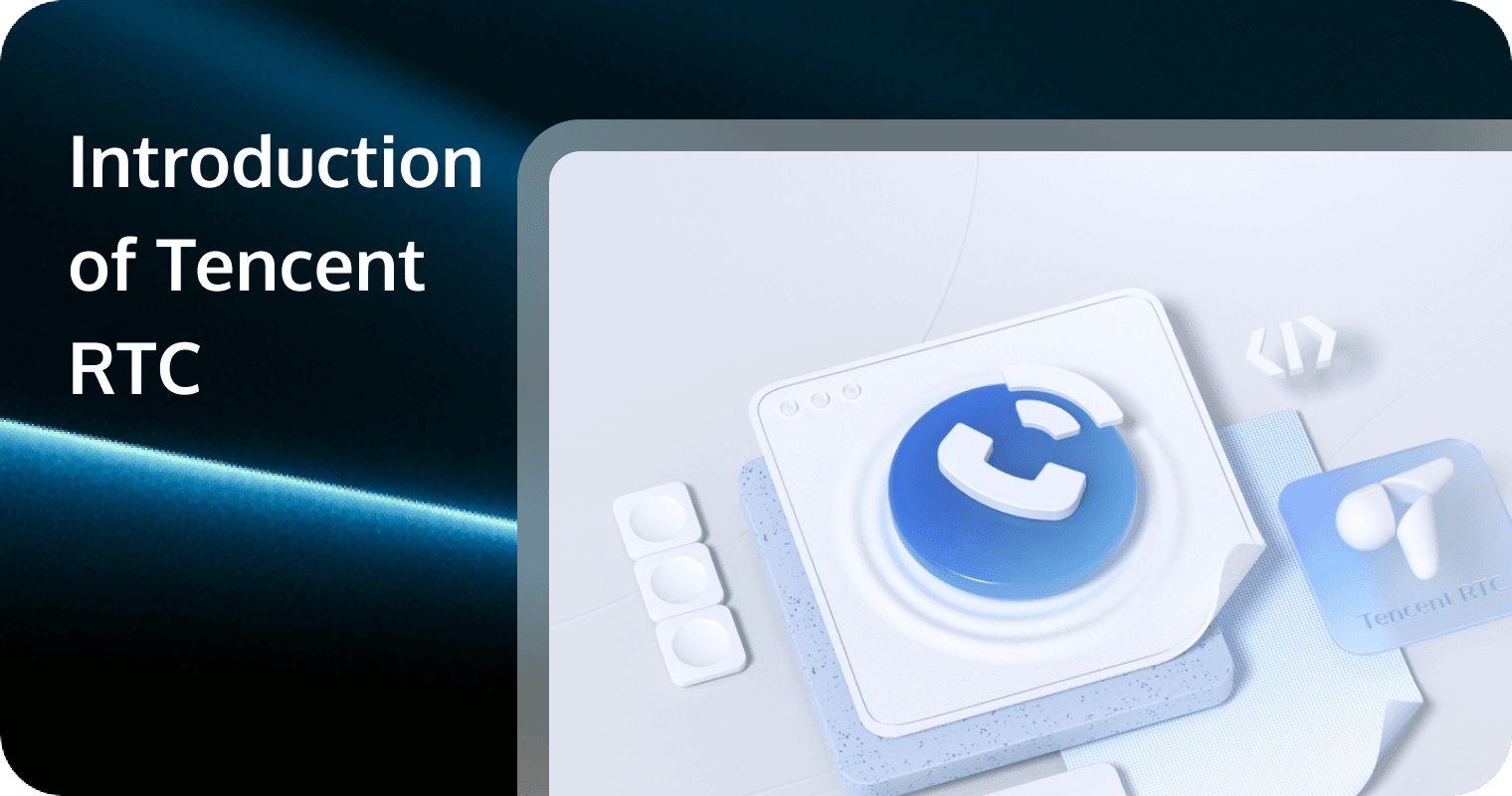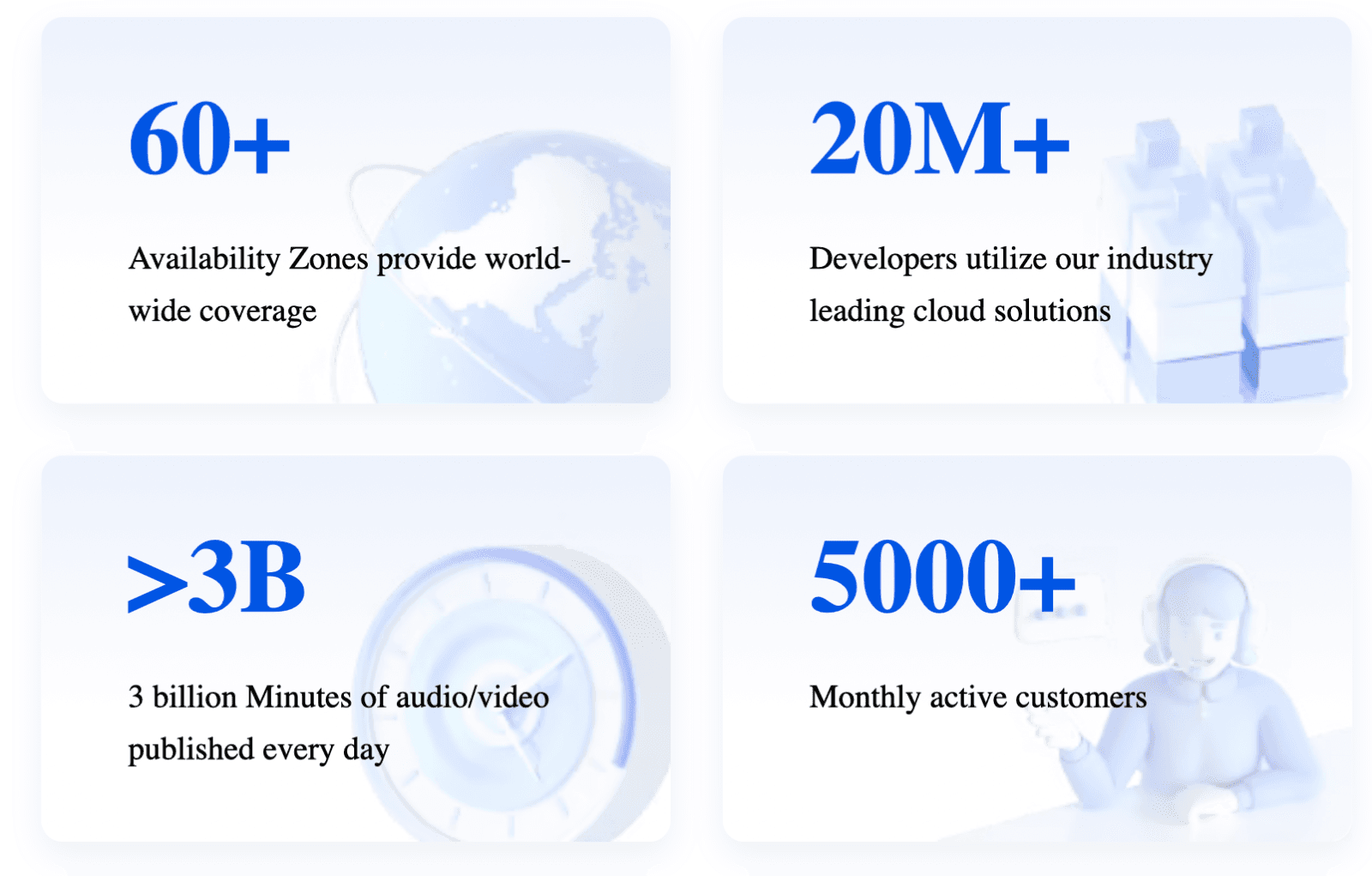
What's the origin and background of Tencent RTC?
Tencent's QQ audio and video team offers a cloud-based Real-Time Communication service for sale. It is based on over 21 years of Tencent's accumulated expertise in audio and video technology. Tencent RTC supports various services such as Tencent Meeting, WeChat, and QQ, representing the best practices in Tencent's extensive audio and video scenarios

Which clients have been served by Tencent RTC?
Tencent RTC delivering cutting-edge communication solutions that stand out on a global scale. In the 2023 "Magic Quadrant™ for Communications Platform as a Service" report, we were recognized as a Challenger and ranked highest in Asia.
Tencent RTC's services are available in over 200 countries and regions, and have been optimized for networks in Southeast Asia, the Middle East, and North America. Tencent RTC provides high-quality, low-latency real-time audio and video services to users around the world.
What products are included in Tencent RTC?
- Call: With a UI similar to WeChat, it supports various powerful features, including one-to-one calls, group calls, floating window, and offline push. Suitable for audio and video calling scenarios of up to 9 people in industries such as online chatting, healthcare, sales consulting, and online education.
- Conference: Conference (TUIRoomKit) is a product suitable for multi-person audio and video conversation scenarios such as business meetings, webinars, and online education. By integrating this product, you can add room management, member management, screen sharing, etc., to your App in just three steps within a day.
- Live: Live provides both broadcaster and audience-side UIKits, encompassing a full suite of components and user interfaces. It supports interactive features such as bullet comments, gift giving, liking, and voice/video connection. Suitable for a variety of business scenarios, it assists you in effortlessly creating interactive live streaming capabilities with voice and video.
- Chat: Quickly integrate individual chats, group chats, chat rooms, and system notifications into your application, catering to a wide range of communication scenarios across various industries such as general interaction, education, finance, government and enterprise, and IoT.
- RTC Engine: The RTC engine provides a suite of audio and video functionalities, including capture, publishing, interoperability, cloud recording, and auditing. It is suitable for a variety of scenarios such as entertainment, finance, and educational training, and can accommodate diverse custom development needs of users.
- Beauty AR: Beauty AR is an AI-powered effect tool with capabilities including beautification, makeup, stickers, and virtual backgrounds. It helps customers deliver a fun video experience, whether it's live streaming, short videos, or online meetings. SDKs are available for Android, iOS, macOS, Windows, Web, Flutter, and Uni-app.
- In-game Voice Chat (GME): Offering a one-stop voice solution, tailored for gaming scenarios, providing real-time voice, voice messaging, voice-to-text, voice content moderation, and voice recording services. With a single integration, a variety of voice needs can be met.
What are the advantages of Tencent RTC?
- Ultra-high Quality: Equipped with the same 3A audio engine as Tencent Meeting, Tencent RTC maintains normal voice call quality even at a packet loss rate of 80%, with an average end-to-end latency of less than 300 milliseconds globally.
- Low Barrier to Entry and Rapid Integration: Offers a rich array of scenario-specific components and full-platform code examples for various sectors including entertainment, education, and enterprise services. Official support is provided for cross-platform frameworks such as Flutter and Electron.
- Cross-platform Global Interoperability: Provides full-platform SDKs for Android, iOS, Windows, Mac, and Web, with a real-time transmission network that covers over 200 countries and regions worldwide.
- High-quality Global Deployment: Features overseas access and acceleration points that span the globe, including Asia-Pacific, North America, Europe, the Middle East, Africa, and Latin America.


